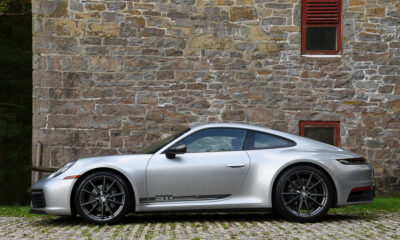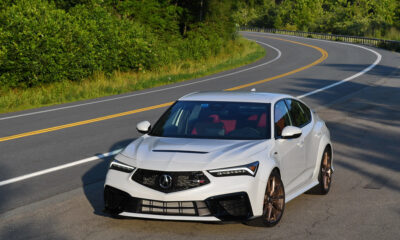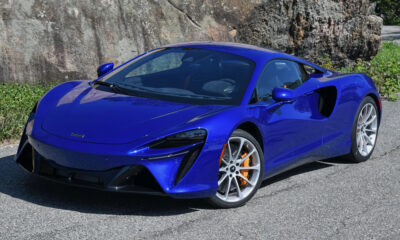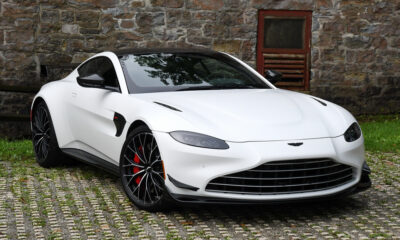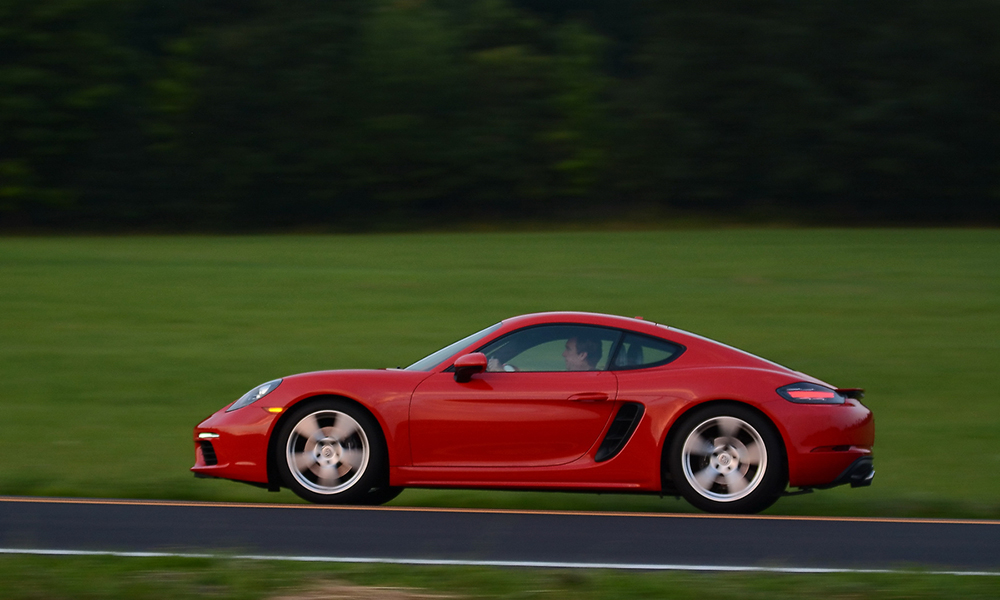
Photo: David Haueter
With the plethora of Porsche Caymans competing in the Continental Tire SportsCar Challenge and Pirelli World Challenge championships, it’s hard to believe that once upon a time Porsche really didn’t want anyone racing it.
Porsche considered the 911 the race car of the model lineup and not the Cayman, but that didn’t stop teams from racing it anyway.
The German manufacturer, of course, had a change of heart and is now building the Cayman GT4 Clubsport that was so successful in the Continental Tire Challenge GS class, but the Cayman was just as successful in the ST class where the cars are much closer to stock.
A drive in the latest 718 Cayman gives a good indicator of why it’s so effective as the basis for a race car.
Launched in 2006, the Cayman (and its Boxster sibling) has always been a great driver’s car.
The car has evolved over the years, with some of the biggest changes taking place just this year.
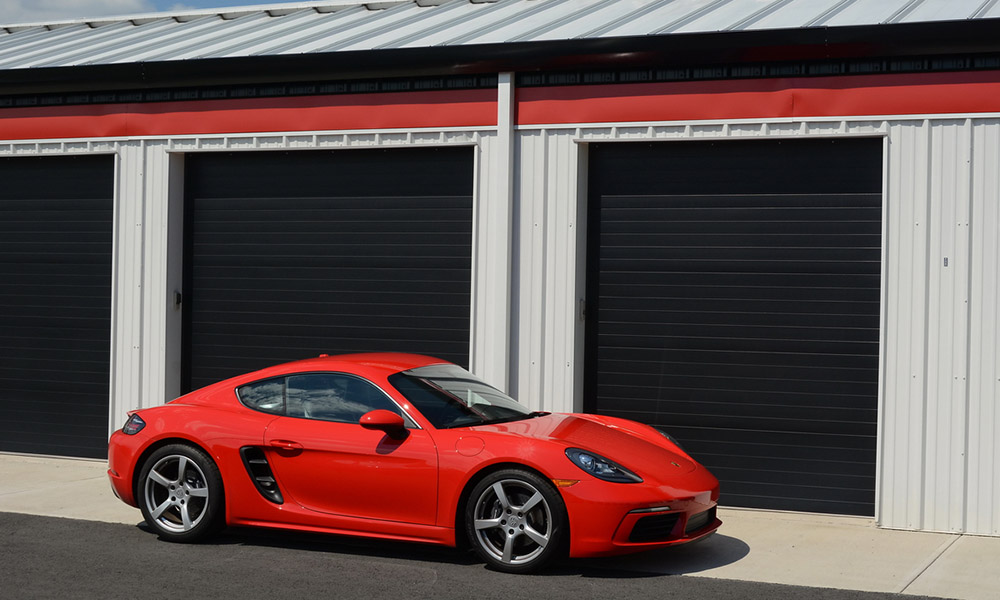
Photo: David Haueter
The revived “718” moniker comes from Porsche’s 718 race car from sixty years ago, which leads us to the next big change for this year.
Instead of a normally aspirated flat-six, the 718 Cayman and Boxster models are now powered by a turbocharged flat-four, which was the same type of engine used in the legendary 718 race car.
Thankfully, the new 718’s engine makes a lot more power than the 142hp in the 1950’s-era 718.
Base models are fitted with a 2.0-liter powerplant that makes 300hp and 280 lb-ft of torque, while the faster “S” models use 2.5-liter units that make 350hp and 309 lb-ft of torque.
Our test Cayman was a base model that had a plethora of options that expanded the price from $53,900 to $68,390.
Some of the more expensive options included Porsche Torque Vectoring (which uses the rear differential, brakes and electronics to keep the car pointed in the right direction), Porsche Active Suspension Management (adaptive shocks) and the Sport Exhaust.
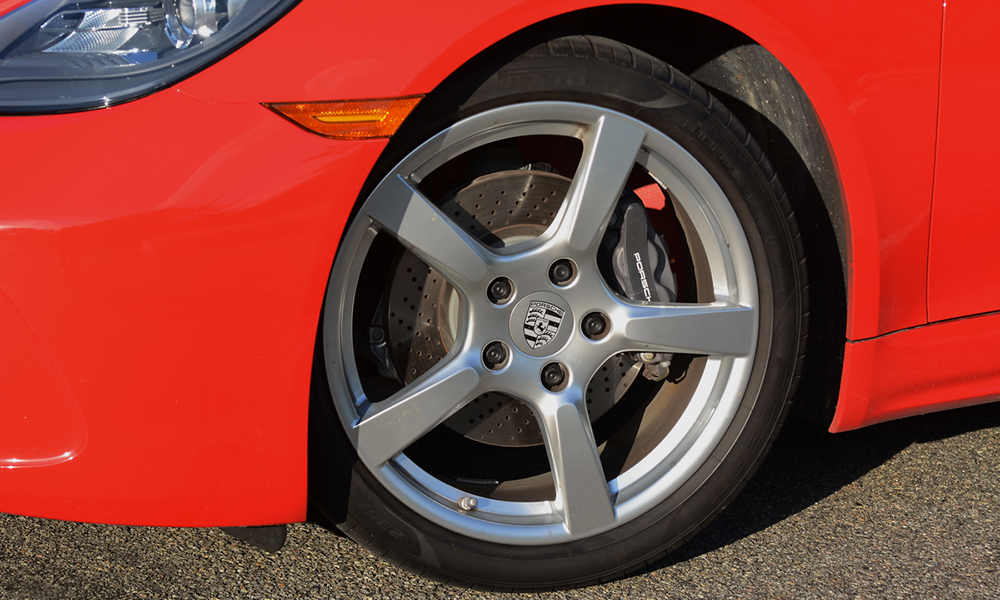
Photo: David Haueter
Our car also included the 19-inch wheels from the Cayman S and the six-speed manual transmission.
Porsche says only around 20 percent of Cayman owners opt for the manual, as most are now choosing the PDK dual-clutch transmission.
The new 718 Cayman also now has the same brakes that were in the 2016 Cayman S model, with 4-piston calipers that clamp 330mm rotors in the front and 299mm rotors at the rear, all of which are cross-drilled and vented.
The Cayman isn’t even close to being the fastest sports car in the Porsche lineup but it gets my vote for being the purest, aside from perhaps the 911 GT3.
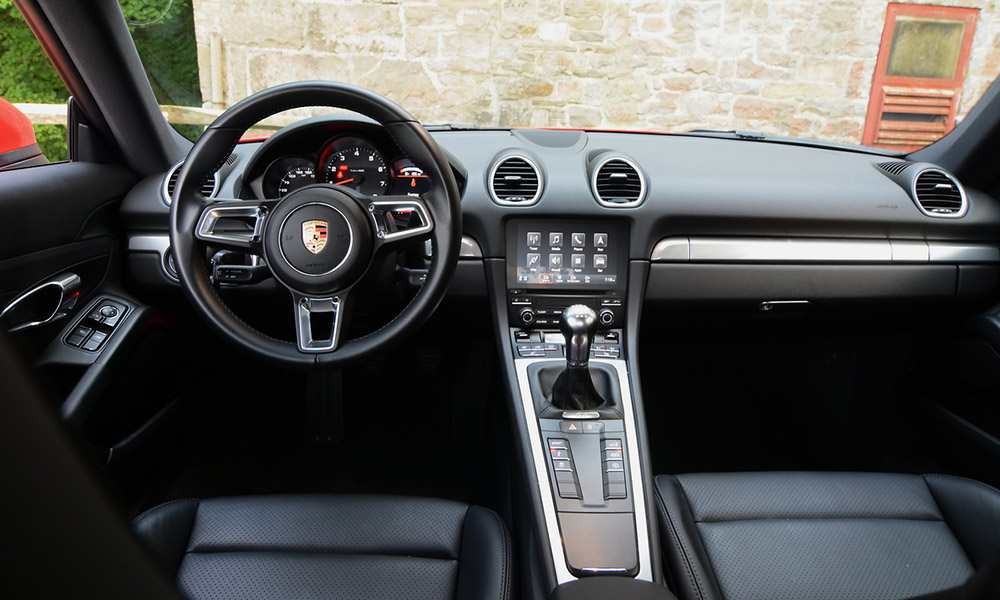
Photo: David Haueter
First of all, the car looks fantastic, with shapely curves and thoughtful design details. The cockpit is also very focused around the driver, with a mix of analog and electronic gauges and information displays that all work well together.
The only glaring design shortcoming in the cockpit are the swing-out cupholders, which position drinks in a perfect spot for dripping onto the center console. There’s also a fair amount of storage for a small sports car, though I wish Porsche designed this car so that you could see and access the engine.
It only takes a few miles of driving the 718 Cayman to understand why it’s such a popular choice for pro racing and track days.
The mid-engine layout gives the car great balance. Threading down a twisty country road almost feels like a religious experience in this car, where you feel like you’re at the epicenter of the car.
Turn-in to corners is sharp and precise, aided by a new steering rack borrowed from the 911 Turbo that’s 10 percent more direct on-center, and there is minimal understeer as you power through corners that you always feel like you could have taken much faster.
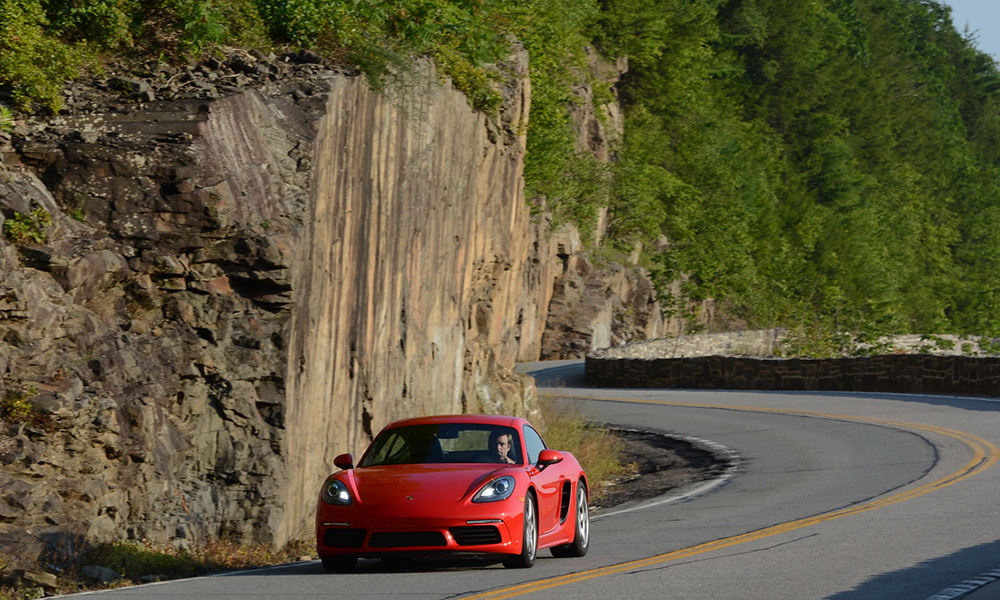
Photo: David Haueter
The manual gearbox is also very precise and the brakes are excellent, with great stopping power and good pedal feel.
The 718 has great power too, capable of hitting 60 mph in 4.9 seconds, just a half-second behind the base-model 911.
There is some turbo lag when starting off and at lower speeds, but once you get the revs up the car has great power and responsiveness for a turbocharged 4-cylinder.
That being said, the 718 does seem to have lost a bit of character with the demise of the normally aspirated flat-six, which sounded better and had a vigor that seems to be missing somewhat in the four-cylinder, even though it makes more power.
I understand all the reasons that car manufacturers are moving to smaller turbocharged motors, but I would be hard pressed to choose between a new 718 Cayman and a previous-generation model with the six.
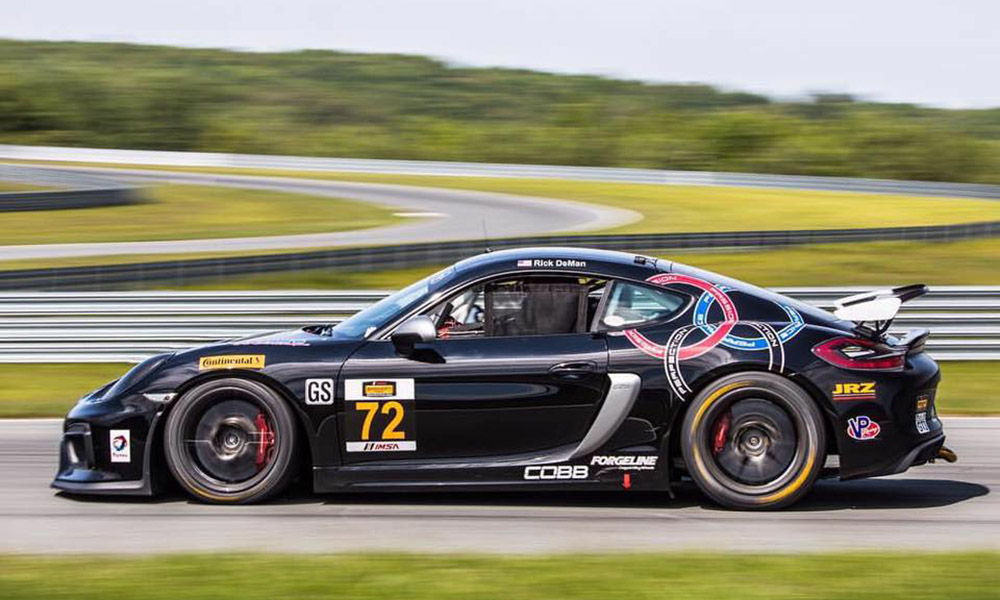
Photo: DeMan Motorsport
DeMan Motorsport are experts at building Cayman track cars.
Owner Rick DeMan says they’ve built around 85 Cayman-based track and race cars over the years and that 75 percent of their business now comes from the Cayman, versus 25 percent from the 911.
“The Cayman is the car of choice for the track,” says DeMan. “The mid-engine placement and the weight balance make it a great track car.
“Any limitations of the car for track performance will be the ability to cool itself.
“The first thing I would look at is what the factory programming does to the performance output as heat increases, because it’s going to get hot with the turbocharger.
“There hasn’t been any effort to really make the four-cylinder Cayman’s into race cars yet, so we’ll have to wait and see on that but the new cars are certainly fast, with good response and great power.”
Time will tell if the four-cylinder Cayman’s are as successful as their predecessors when it comes to the track, but if the road car is anything to go by, the car has a lot of strengths to build on.
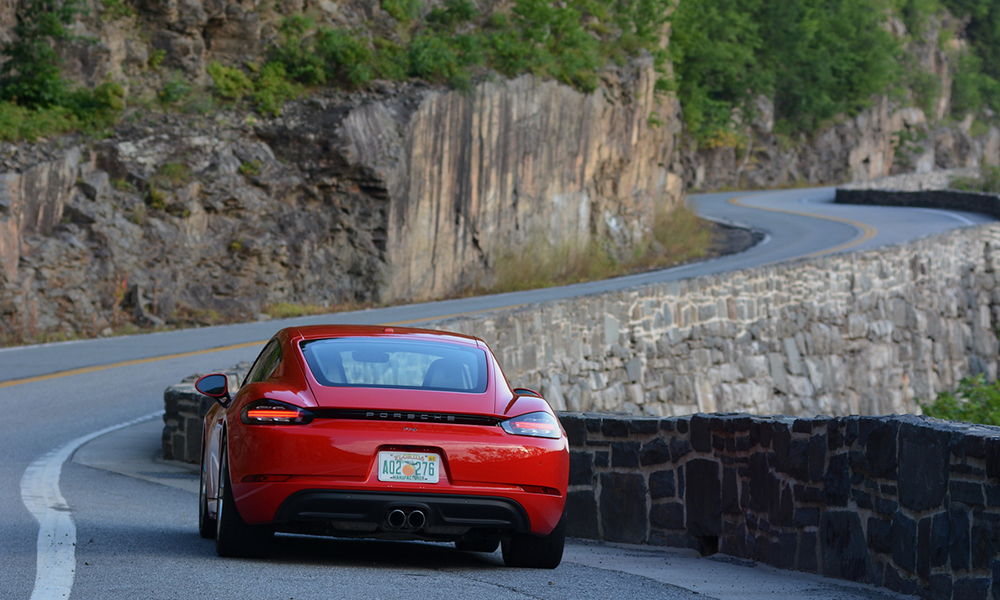
Photo: David Haueter


















